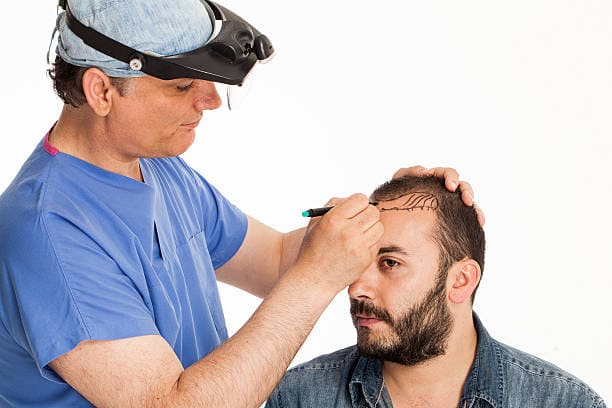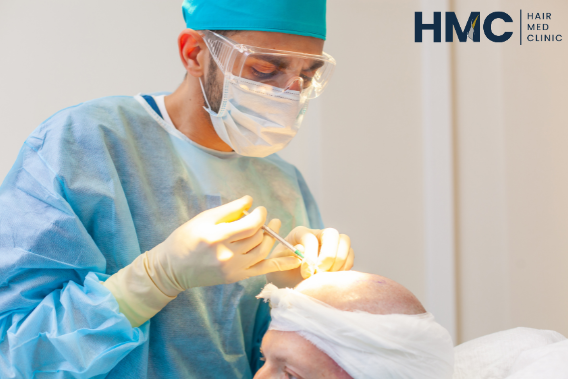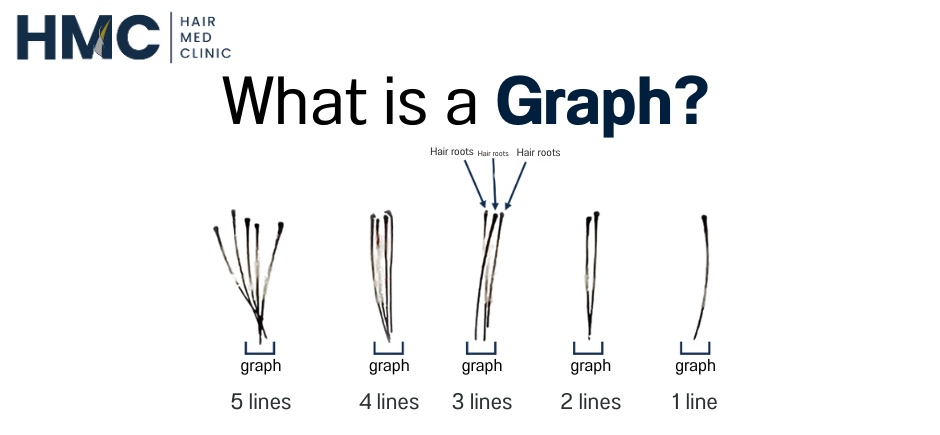DHI (Direct Hair Implantation) hair transplant technique is a popular hair transplant method today because it is highly safe and gives natural results. DHI hair transplant is a technique developed and improved from FUE (Follicular Unit Extraction) technique by using specific tools that help the hair transplant process be more precise and do not leave visible scars.
Hair transplant process using DHI technique
DHI hair transplantation starts by extracting hair roots from areas with thick hair, such as the nape of the neck, which is a source of strong hair roots. Then, a tool with a small, specific needle called a DHI implanter pen is used to transplant the extracted hair roots to areas with little or no hair, such as the top of the head or forehead.
The DHI implanter pen helps in precise hair transplantation, with good control over the depth and direction of hair root implantation, resulting in natural-looking results and reducing the risk of scalp tissue damage.
Advantages of DHI Hair Transplant Technique
- Natural results: Since DHI hair transplant technique allows good control of the direction and angle of the hair roots, the newly transplanted hair looks natural and blends with the original hair.
- No scars left: By using a small and specialized DHI implanter pen, it does not leave large or noticeable scars, compared to the FUT technique that may leave visible scars.
- Fast recovery: Since DHI hair transplant does not require cutting or stitching, it helps the recipient recover faster and can return to their daily activities faster than other techniques.
- No need for large wound opening: The DHI technique does not require a large incision like the FUT method, which involves cutting off the scalp. The use of small instruments reduces the risk of injury and scarring.
- No obvious wounds: DHI hair transplantation does not leave visible scars, without cutting the scalp like the FUT technique, allowing for rapid care and recovery.
Precautions and side effects
Although DHI hair transplantation is very safe and provides good results, there are still some precautions that those who want to undergo hair transplantation should consider.
- Choosing a quality clinic: You should choose a clinic or doctor who is skilled and experienced in hair transplantation to get good and safe results.
- Risk of infection: As with any surgery or treatment, DHI hair transplantation carries a risk of infection if not properly cared for after treatment.
- Possible side effects: After hair transplantation, there may be swelling, redness, or itching in the area where the hair was transplanted. These are normal symptoms that usually disappear within a few days.
- Follow-up after hair transplant: People who undergo hair transplantation must follow the doctor’s instructions for post-operative care, such as avoiding touching or scratching the hair, avoiding sun exposure for the initial period, and taking medications as prescribed by the doctor.
DHI hair transplant is a good choice for those who want to solve the problem of thinning hair or baldness. With a high precision technique and natural-looking results, without leaving visible scars. Those who are interested should choose an experienced clinic or doctor to receive the most accurate and safe care.
If you have further questions or would like to consult a doctor for advice tailored to your hair type😊
Free consultation👉HAIR MED CLINIC
Ask for more information : ☎️064-194-2429 LINE: @hairmed INSTAGRAM: hairmedth FACEBOOK: HAIR MED Hair Center by Nawakasem #HAIRMEDCLINIC #หมอเจมส์ปลูกผมHAIRMED #HAIRMEDปลูกผม #ปลูกผมHAIRMED #ปลูกผมถาวรFUE #ปลูกผมถาวร DHI #ผมบาง #หัวล้าน #ผมร่วง #คลินิกปลูกผม #haircenter #hairmedhaircenter #fuehairtransplant #dhihairtransplant







